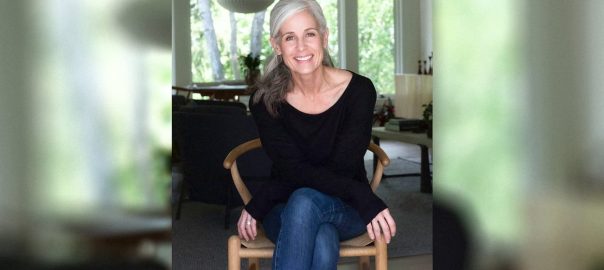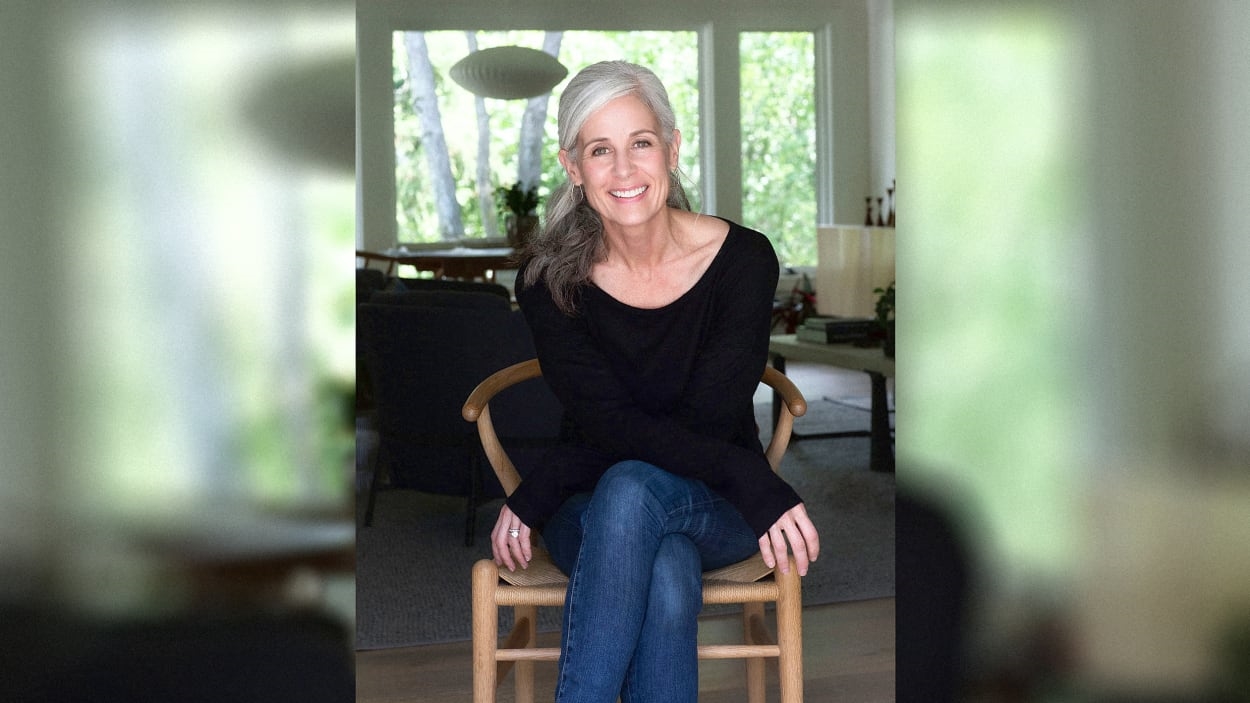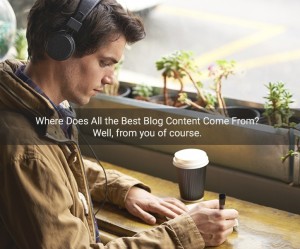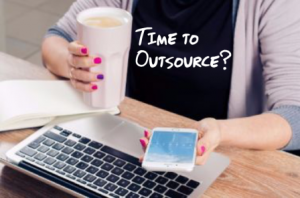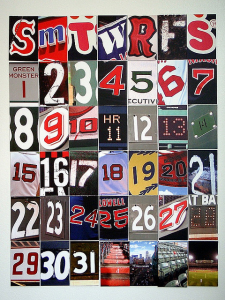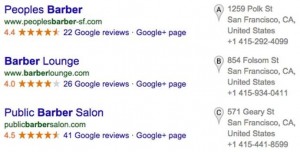MillerKnoll CEO Andi Owen became a central figure in the debate over executive compensation when a clip of her telling employees to “leave pity city” went viral in April. The 90-second segment, which came at the conclusion of a 75-minute March town hall, shows Owen responding to a question about bonus payouts by urging employees to focus on hitting financial targets instead of thinking about their individual bonuses. She said: “I had an old boss who said to me one time, ‘You can visit pity city, but you can’t live there.’ So people, leave pity city. Let’s get it done.”
There’s no question that economic uncertainty and a slow return to office has hurt MillerKnoll, a company with $4 billion in annual revenue whose portfolio includes iconic workplace furniture brands, Herman Miller and Knoll. The stock is down about 35% for the year, and the company has signaled that its fourth-quarter revenue, which it will report next week, will be down from the prior year.
In an exclusive conversation with Stephanie Mehta, CEO and chief content officer of Fast Company’s parent company, Owen talks publicly for the first time about the fallout from the video—she received death threats—and acknowledges that the clip makes her look “tone-deaf and even dismissive.” The interview has been edited for length and clarity.
Inside MillerKnoll’s Viral Town Hall
Fast Company: I want to start with the now-famous town hall. What themes and messages had you intended to communicate to employees back in March and . . . what went wrong?
Andi Owen: We were coming to the end of our [fiscal] year—we end at the end of May. We were so close to our bonus goal, and my goal was really to motivate and rally. And I was intentionally really fiery. I was intentionally trying to get the troops motivated. My goal was to get them to take a minute and say, “Gosh, it really stinks that we aren’t further along.” And maybe take a minute and feel bad about that, but then sort of leave that place of feeling bad. We still have a quarter, we can still do this. When I look back on it now—obviously, with everything that’s happened and my remarks sort of being taken out of context and what they look like in that world—I can easily see how what I said and how I said it could seem tone-deaf or even dismissive. It all makes sense to me. I could have been more in tune with my audience. [It] all very quickly turned into a very in-depth conversation online and [on] social media about compensation. And then there were a lot of inaccuracies. You can’t take bonuses away. You either meet your target or you don’t. I’m the last person to get a bonus. If everyone else doesn’t get a bonus, I don’t get a [cash] bonus. I certainly never got a bonus of any of the amounts that were talked about.
FC: Let’s back up and talk a little bit about the inaccuracies and the context. For context, the clip that went viral was the end of the town hall, is that correct?
AO: Yes, it was about an hour-and-20-minute meeting, and it was the very end. We used to do kind of a spontaneous Q&A, and we have a chat going throughout the meeting. [The clip] was a response to a question.
A referendum on CEO pay
FC: And so the question was about bonuses. How are bonuses calculated? It sounds like, from the clip, there was a potential of a revenue shortfall that would result in bonuses being paid out at a lower level.
AO: Bonuses are calculated based on the metric that you’re measuring for the year. At our company, and probably in most, [the metric] is a stretch to your financial plan. Typically, we provide a forecast of where we are [in the calculation] of bonuses. We haven’t closed the year, and we haven’t reported financials, so I can’t go into details there, but we were providing our last-quarter forecast on where we thought we would be. And we were trying to be very specific: Hey, here is the shortfall right now. It looks like we might miss.
FC: So the $26 million was a revenue shortfall, profit shortfall, or some combination?
AO: A combination of the two. That might sound like a lot of money; it felt hard, but achievable. I tend to be—although it’s really hard to believe now with my given fame and status for this clip—I tend to be very calm. I tend to not be a fiery person. We were talking [before the town hall], and my team’s like, “Andi, you’ve got to reach deep inside and you’ve got to fire up the troops because this is within our reach.”
FC: And so what are some of the other inaccuracies that were reported about comp?
AO: The fact that I had taken bonuses away from the team was inaccurate, [and] the amount of money that I received in cash.
FC: But the information reported in the MillerKnoll proxy around your comp is accurate, correct? [Editor’s note: According to SEC filings, Owen’s base salary for the fiscal year ending in May 2022 was $1.1 million, and her cash bonus was $1.3 million. She also received $3.5 million in stock options and restricted-share units that vest over three years.]
AO: Of course. But if you also look at that, you’ll see that my compensation is 80% performance- and equity-based, right? And so what that means is that it’s stock-based performance compensation. So you can look at the total and you can jump to a conclusion; but ultimately, the majority of that compensation is stock-based and will vest over time. The bonus is a portion of that, but primarily I’m compensated in stock.
Death threats and crisis PR
FC: Why did you decide not to release a public statement, especially when news outlets started reporting on the clip and asking for comment?
AO: I’ve never really been involved in something like this. I tend to be much more behind the scenes. We’re not a huge company. We relied on some really great experts in this kind of thing, and their advice was, “Don’t say anything. This will be a moment, just keep quiet.” We tried to correct as many facts as we could, but [the correct information] was sort of buried in the very bottom of whatever the coverage was. I think I was just shocked and kind of taken aback, and it all happened so fast that I think I was unprepared. Now that I’m much more experienced at this, I would do it very differently.
FC: On a personal level, what was it like to go viral?
AO: It was terrifying and awful and embarrassing and humiliating, and I think shocking more than anything. I think the death threats were probably the most terrifying of the whole aspect. I will say, there’s always a gift in anything like this, and there’s always something to take away. And I think there were so many people [who] reached out to me—[who] either knew me or didn’t know me—with support, with encouragement, with similar stories, with fears.
After going through the emotional piece of it, [I thought], Okay, now what do I do? How do I lead through this? How do I make sure that my employees know my intent? As leaders, especially in times like these, we have to deliver tough messages, have to deliver good messages, we have to lead and focus on the future. And you can’t shy away from doing that because something like this has happened.
FC: Did you investigate the leak or try to ascertain the source of it?
AO: What we tried to do is not be as naive as we were. We’ve never had anything like this happen before. So what we tried to do was say, Well, let’s think about if this could happen in the future, how will we communicate differently? Investigating the leak, at this point, it really doesn’t matter. There were few people [who] were unhappy. We know that it wasn’t widespread; but in the end, ultimately, the most important thing is how we prevent this from happening in the future, and how we’re smarter about what we do and say.
FC: This is the first time I had heard that you’d received death threats. Did you have to engage with security?
AO: Yes. When I moved from California to Michigan, I reveled in leaving our doors unlocked and living a very simple life. We had to be much more careful. The good news is there weren’t a lot [of threats], and they turned out to not be serious. And apparently, this is very common on the internet. I was not aware of that, but we were trying to be very cautious. But that was a very short period, and things are back to normal now, and I’m very grateful for that. More than anything, you worry about your family and your children more than yourself.
FC: What advice would you give other leaders based on this experience?
AO: I would say, be courageous. Don’t be afraid to deliver the messages you need to deliver and to focus on what’s right for your company. But be very thoughtful in how you interact and what mediums you’re using to interact and what level of spontaneity you can, as a leader, indulge in these days. I hate to say you need to be more scripted, but I do think there’s an element of caution and carefulness that I employ now. I felt like the technological advances that we had discovered in COVID, that allowed us to do so much on a screen, were so democratizing, [but] I think I underestimated the loss of in-person contact and the loss of understanding reading human emotion when you’re in the same room with someone. If you are an empathetic leader, you can look at someone and see how they’re feeling. When I think back to those moments, I think, Gosh, if I could have seen someone’s face, if I could have understood how my words were hitting them, I could [have] self-correct[ed] in the moment.
Return to office: Still slow in the U.S.
FC: Your comments about being in a room together with people are a good segue to this debate that continues to rage about in-office versus out-of-office.
AO: In the United States.
FC: What are you seeing worldwide, and why is the U.S. seeing these entrenched views on in-office versus work from home?
AO: The move to working remotely and working in a kind of dispersed fashion was happening long before COVID. COVID unleashed for all of us this perception that we could be so productive in living our lives in our homes and at our home offices, and still get so much work done and have so much balance and personal lives and flexibility. And I think that was amazing when we were all focused on a common enemy, which was COVID. The flexibility that we found is what we all want to hang onto. Coming into an office seems to represent, particularly in the U.S., a return to “9 to 5,” a return to, in some cases, a punishing commute and a loss of the flexibility. [The companies] that will be successful are the ones that find ways to provide that flexibility, provide purpose in gathering, and stress being together.
FC: How can companies incentivize employees to come into the office?
AO: I’m biased, but obviously I think well-designed office spaces that are a fit for purpose are really important. And I say that having worked for many years in a different industry in spaces that were not necessarily well-designed and fit for purpose. Having come into this industry, I understand the impact and the power of thoughtfully designed spaces, where you can actually be your best and have your thinking moments or your collaboration moments.
FC: As you said, you’re biased. Do you think you’d feel the same way if you were still back at the Gap [where you worked for 25 years]?
AO: I think we need to get people back together. People are isolated. People are lonely. I think people are trying to lead and learn and get mentorship from a screen. And that’s very hard to do. The impact of where I worked has been primarily driven by the ability for the space to serve what I needed, but also more importantly, the beauty and the magic of the people who were in it. And that, I think, is what most of us are missing the most.
Does design still matter?
FC: Fast Company has published a number of stories that explore whether corporate America has fallen out of love with design; or whether companies such as Apple, which used to be design-led, are letting engineering or other considerations take precedent. Do you have a perspective on whether companies are starting to pull back from or recalibrate their relationship with design as a discipline?
AO: I hope not, but I would say, if design is the culture of your company and design is at the heart of what you do, it would almost be impossible to do that. If you look at our company, going back to the ’30s with Gilbert Rhode [an American architect who advised Herman Miller], our entire way of approaching what we do is through problem-solving, through wondering, through asking questions—and inviting outside thinking into what we’re trying to do. I do think there was a period in time when many corporations that were not necessarily coming from a culture of design were implementing design thinking as a way to sort of approach their corporate processes and how they were kind of approaching growth. If you don’t truly do that in every part of your business, and you don’t aspire to let design become your culture, it can become a fad. It can become a buzzword. It’s an intense process, and it’s time-consuming. But you mentioned Apple and engineering, and I would say engineers are some of the most amazing designers I’ve ever met. So I would challenge the thinking that design is only with designers. Design is everywhere, and it’s really about how you think about it and how you deploy it.
The origins of “pity city”
FC: I’ve worked with a lot of leaders who use homespun language. I’ve never heard the term “pity city.” Could you talk a little bit about your relationship with the boss who shared that phrase with you?
AO: I don’t want to name him because I don’t want for him to go viral, but I remember we were sitting in a meeting, and I was a merchant at the time, and I had a particularly horrible product that I had bought just a boatload of. And I was feeling bad, feeling like a failure, and I couldn’t sell it for [even] $2.99. It was just a nightmare. We were having a review and I was lamenting, and he looked at me and he said, “Yep, sucks, but I’m going to give you some advice.” And he said the phrase—which I’ve sworn I’ll never say again!—and I thought about it, and it kind of turned on a light for me. I was like, Yeah, I do feel sorry for myself right now, and that’s okay. And then I have to look up, and I’ve got to move on, and I’ve got to do something. And so it’s always been this pivotal kind of thing for me to really allow myself to fail and feel crappy, but then find the way and the path out.
(6)
